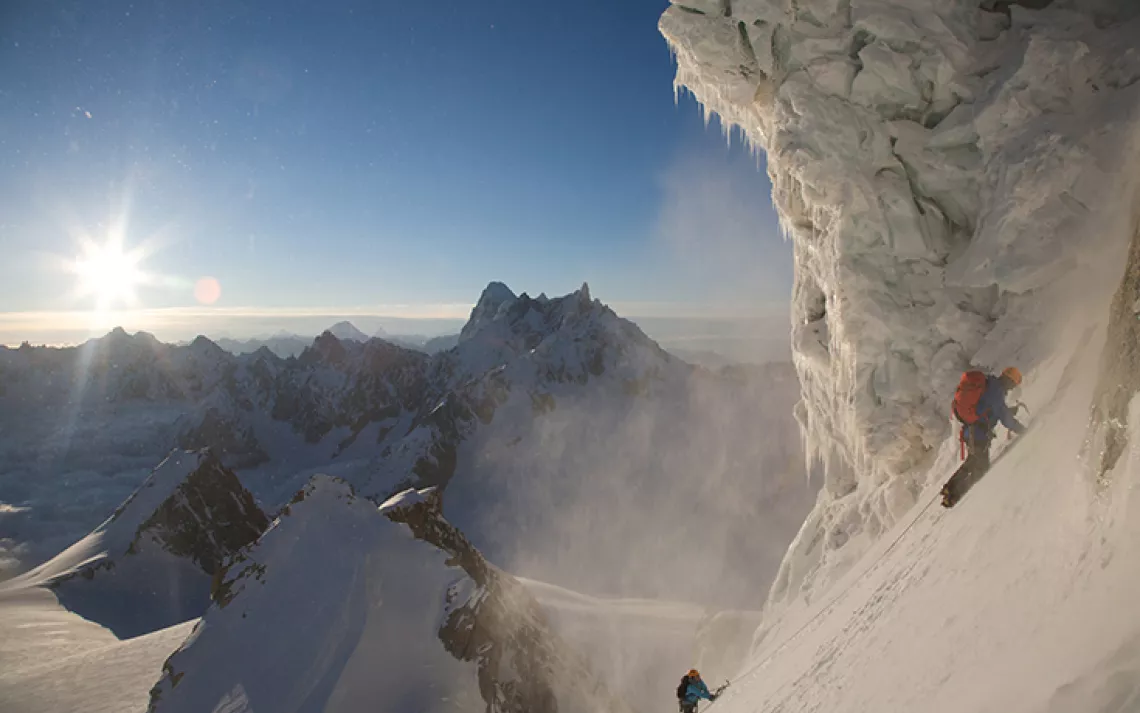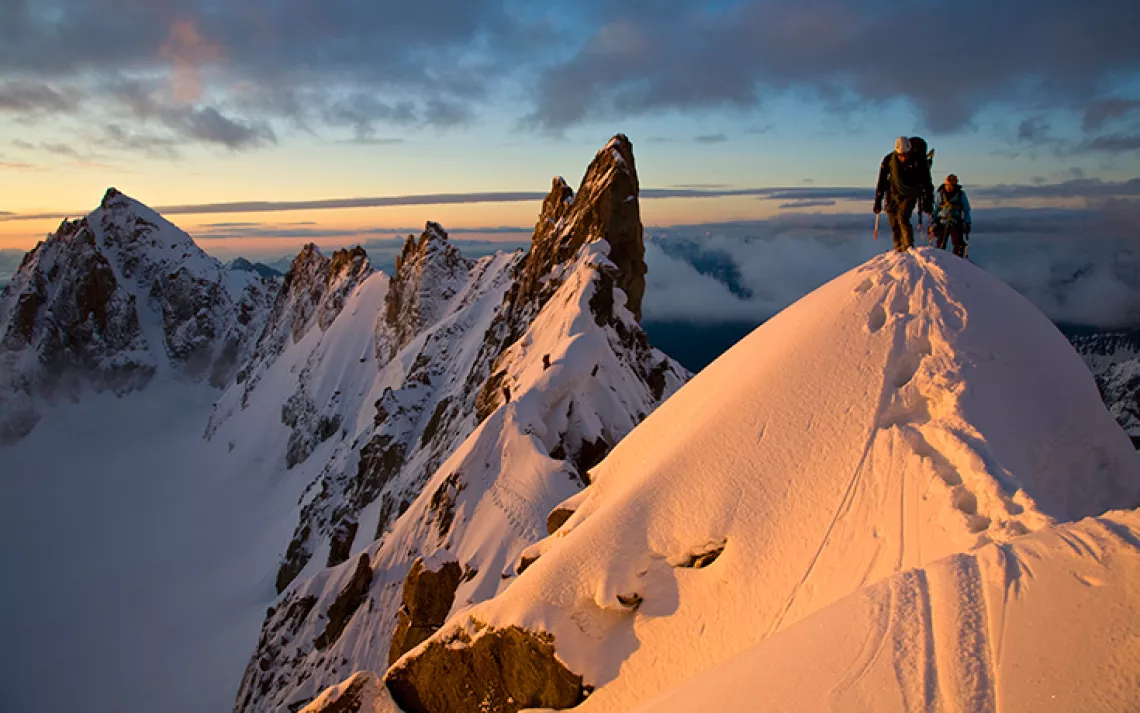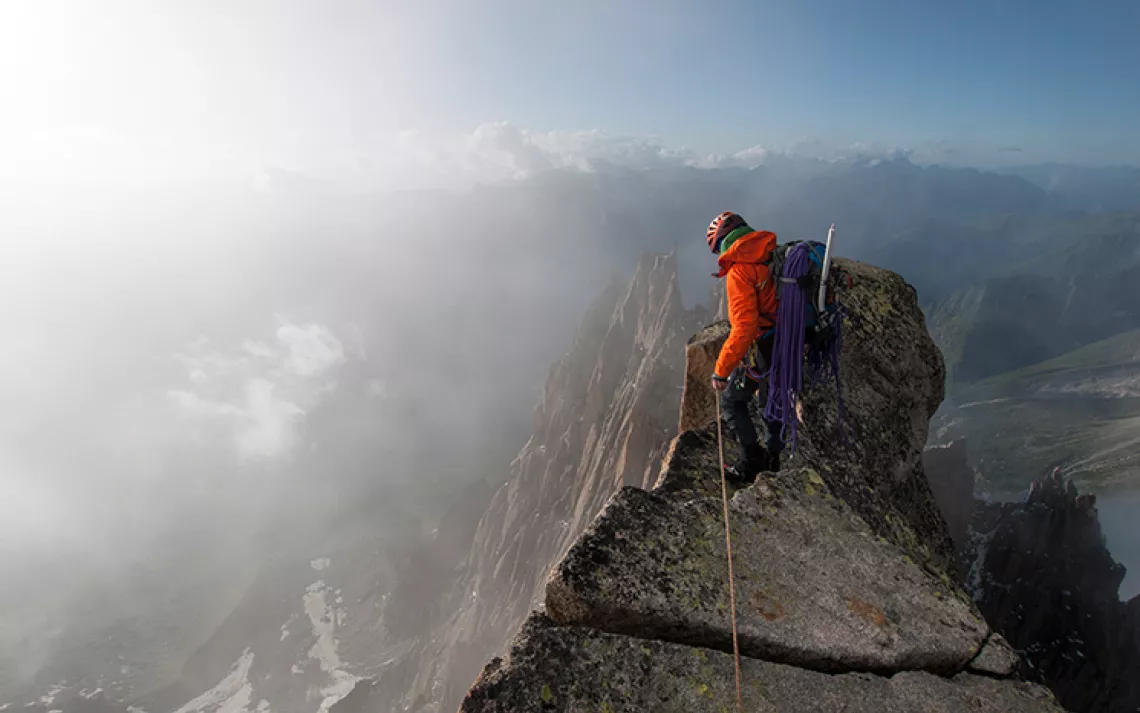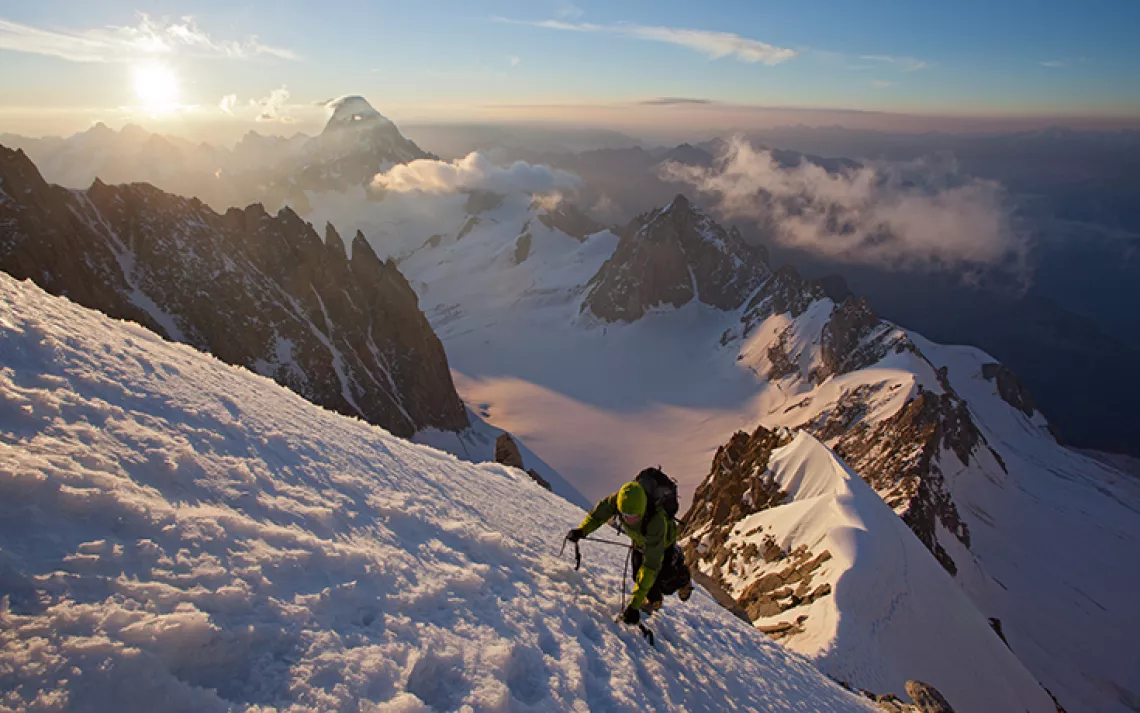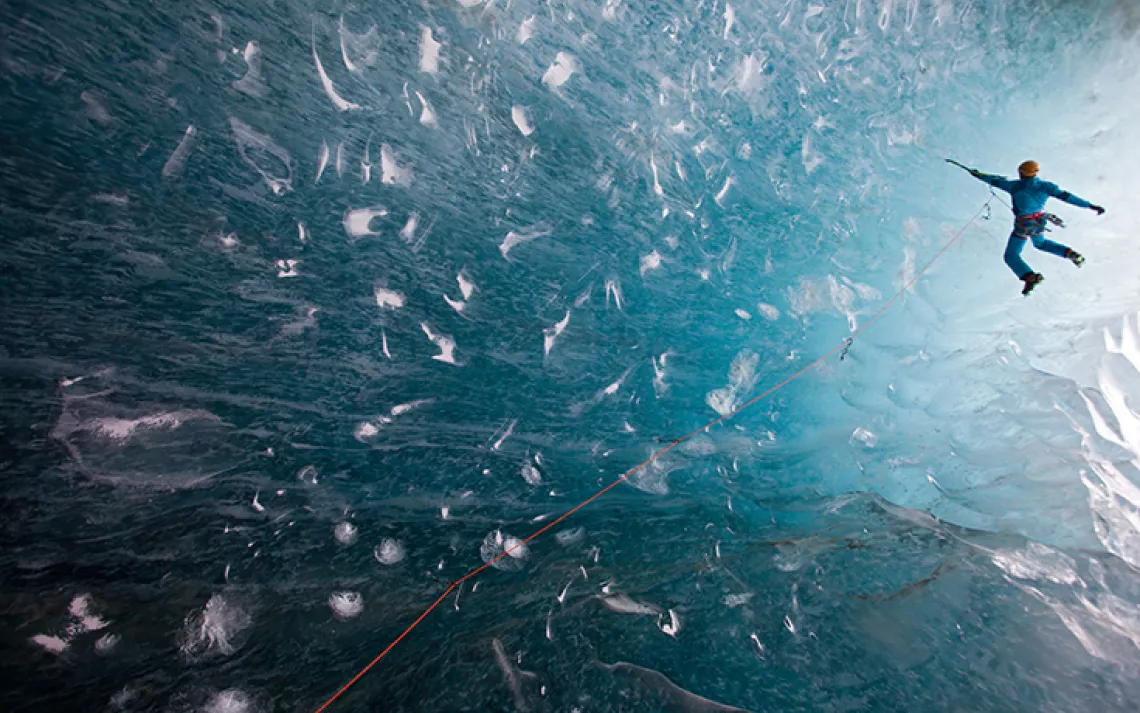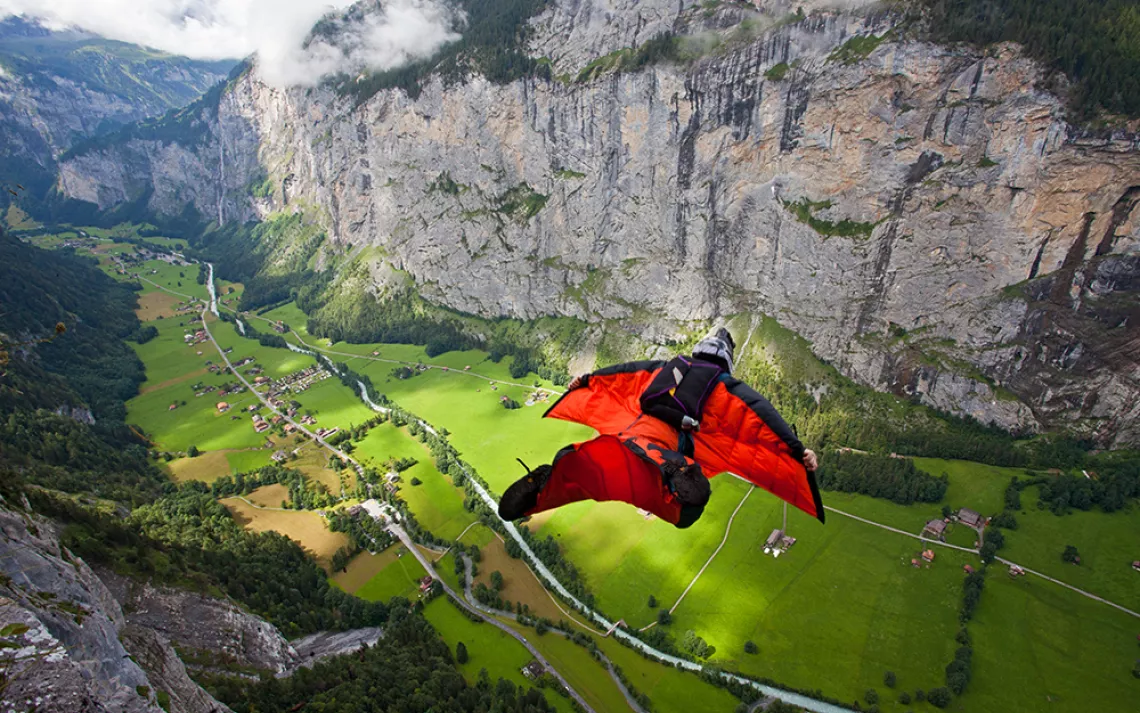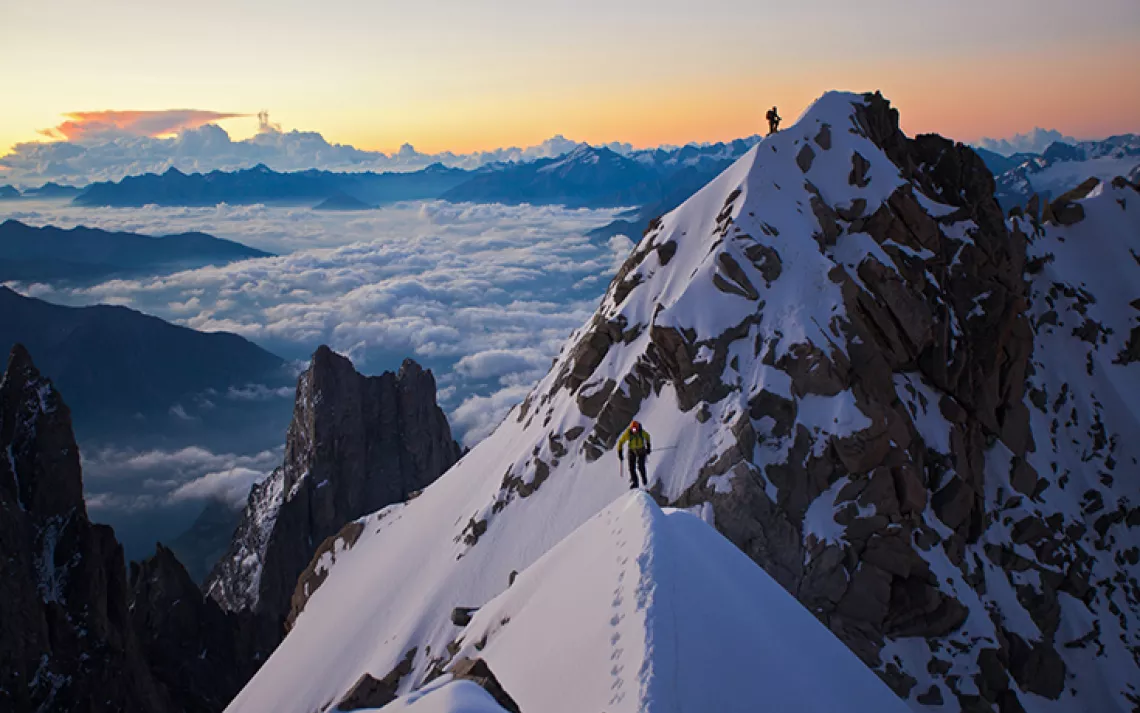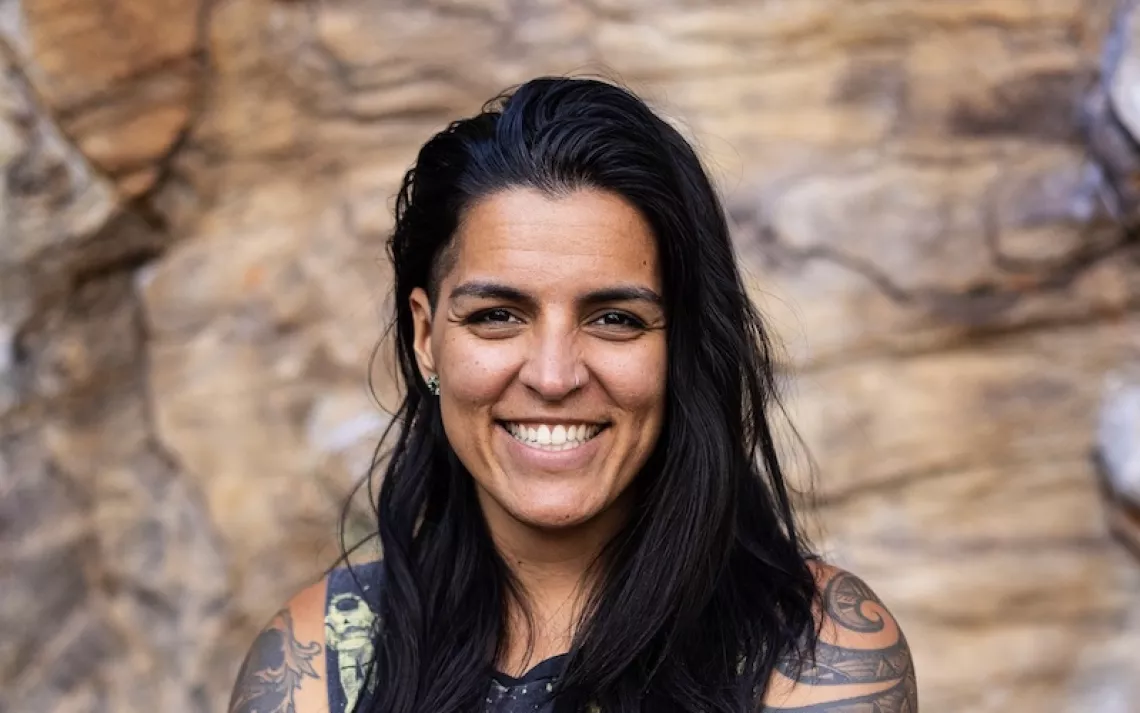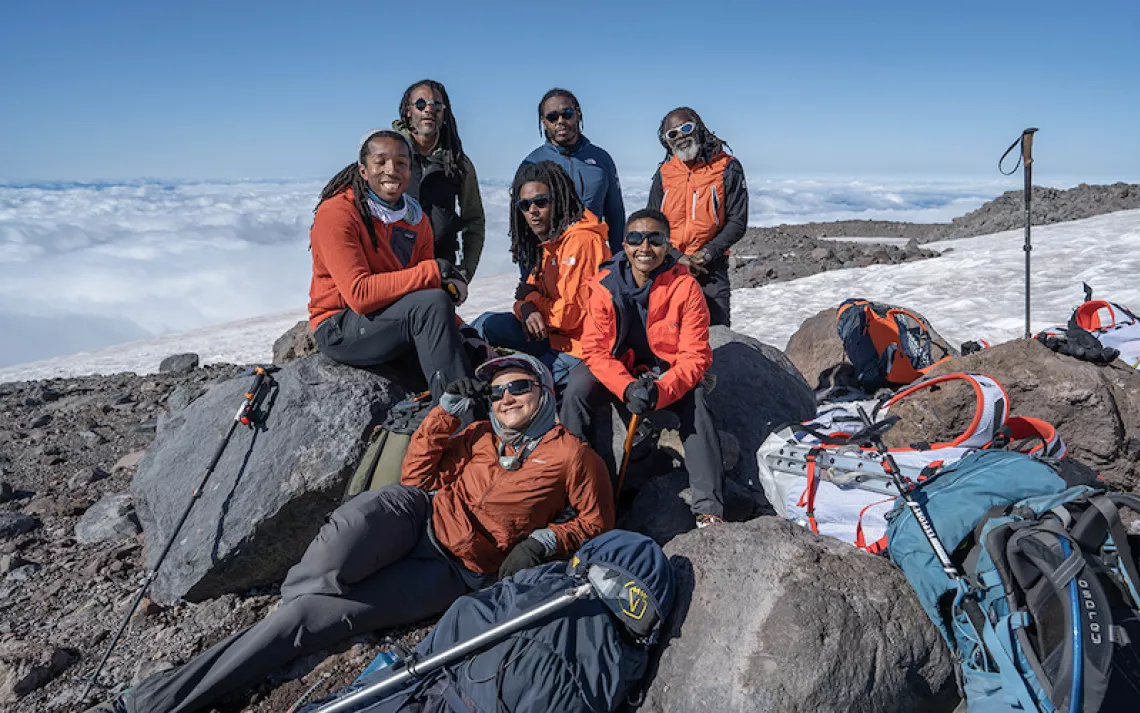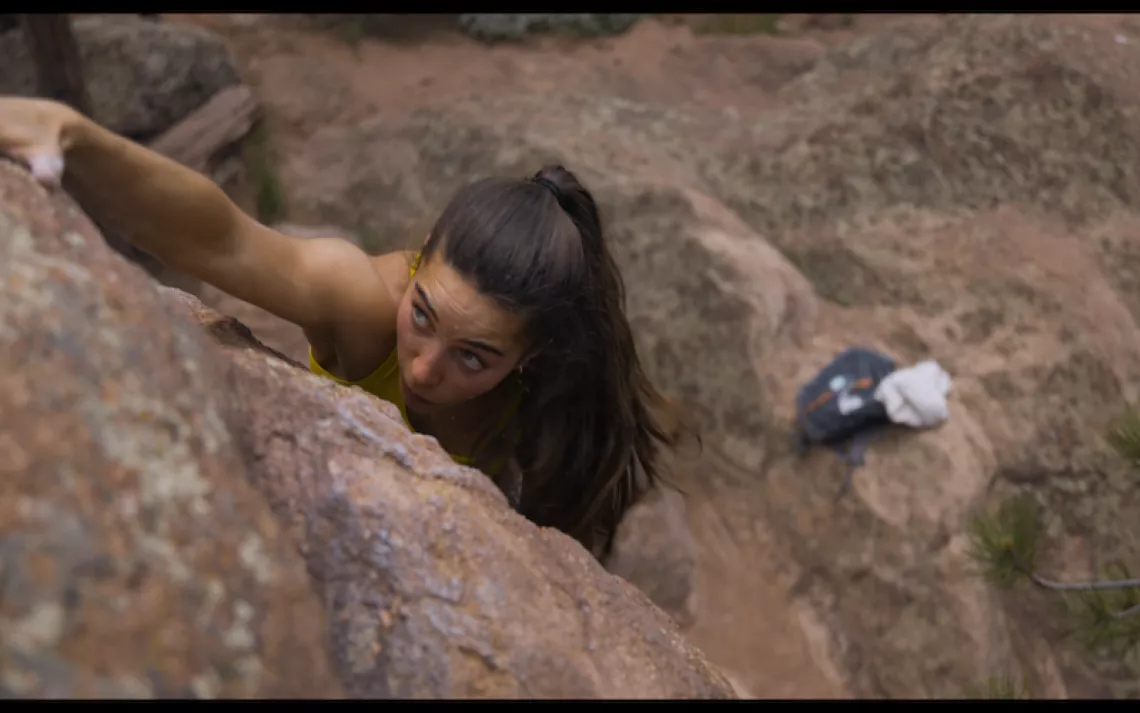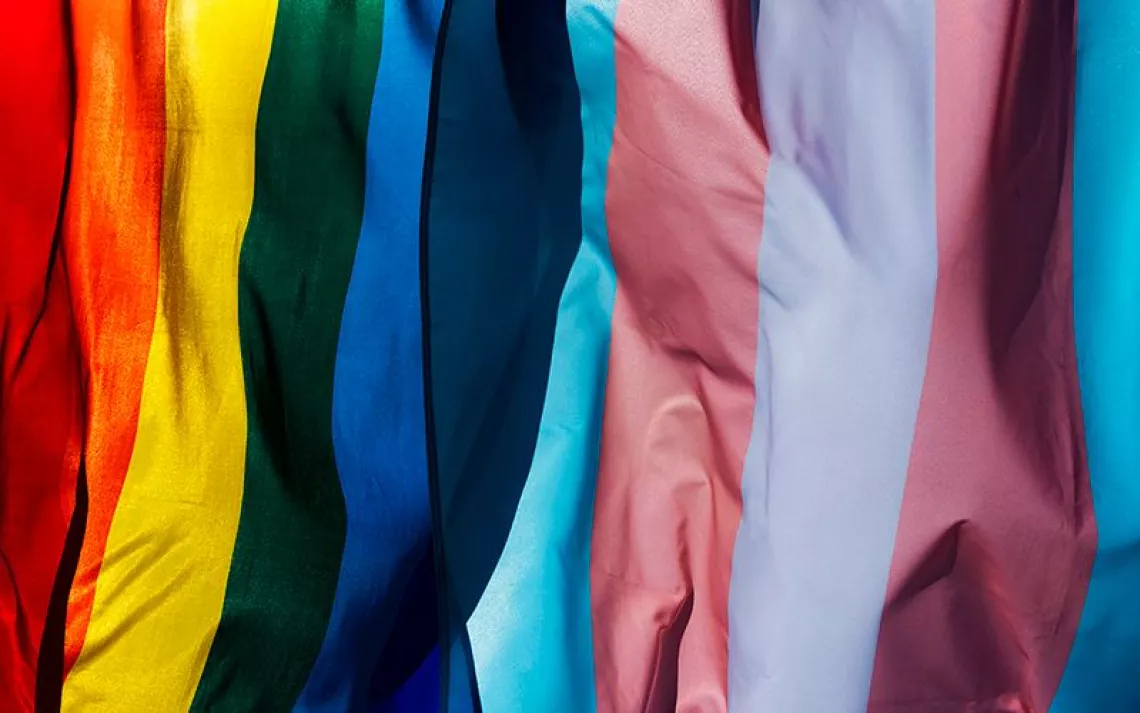Forget the Lens Caps and Instagram Filters
Q & A with photographer Jon Griffith, author of the new photobook "Alpine Exposures"
Photos by Jon Griffith
Jon Griffith raises the bar for aspiring outdoor photographers. He’s summited peaks in the Alps, Patagonia, Alaska and the Himalayas; is close friends with climbing speed demon Ueli Steck; and doesn’t use a camera case, leash, or lens cap while heaving himself up 7000-foot tall vertical faces. “If you spend too much time worrying about your camera kit you’ll never get the shot,” Griffith says.
His new photobook, Alpine Exposures (Vertebrate Publishing, November 2014), details the decade he’s spent as a mountain sports photographer in the Alps, the majestic backdrop for the evolution of alpine climbing. “The progression in alpine climbing has been huge over the past 20 years,” Griffith tells Sierra. “But I don’t think photography has moved at the same speed.”
Griffith is suggesting that some contemporary mountain sports photos are overedited to appear “hyper-real,” and don’t have the adventure story to back what they’re selling. Alpine Exposures, he says, “shows the grueling, honest side of alpinism, which is the side I’m really into. I’m shooting the cutting edge so I can show people what that is.” His self-described “scrapbook”–which features elite alpine climbers, spectacular snowcapped peaks, and detailed captions for the adventures that went into every shot–doesn’t disappoint.
Sierra: You say you “shoot as a climber, not as a photographer.” What does that mean?
Griffith: Alpine climbing is always a puzzle. The days are short and cold, and you can’t cheat your way up. It’s so pure, and that’s how I want to represent it. Every shot I take is totally genuine and features someone who’s really pushing themselves on a route.
How would you describe your shooting style?
I always shoot the sharpest I can. I’m not into depth of field. I don’t think there’s a point in going up to the high mountains and making everything look blurred and out of focus. I just trekked for three days to get up here, why on earth would I not want to show people that?
Do you edit your photos?
Yeah, but minimally. I can’t say I never edit. If you’re documenting an honest sport you should be honest with your photography as well.
Am I cheating if I use Instagram filters and heavy editing?
I don’t frown upon the people who do, but I’m not a fan. As a professional photographer you’re held to a different standard. I find it a little bit vexing when a professional’s posted a photo that’s hyper-real and taken 20 meters away from a lift station. It’s sold as something it’s not.
Is mountain sport photography getting better or worse?
[U.S.] has a lot of really strong alpine photographers, like Camp4Collective and Jimmy Chin. At first you think if you climb the hardest and get shots of [famous climbers] you’ll make loads of money, but it’s actually the opposite. Gear companies aren’t making millions off their top alpinist line of clothing; they’re making it off backpacks they sell to school kids. So it’s a bit of a weird industry.
You mention that your mother’s death drove you towards this job.
My mum’s death allowed me to take a year off of my studies and go to Chamonix. That feeling of challenging yourself–whether you’re going for a bike ride or climbing a Himalayan north face for first time–makes you grow up. As a city boy, I’d never really had that.
How do you deal with your camera gear in these extreme environments? I panic if mine’s exposed to a little rain.
I literally shove my camera at the top of my pack, along with sharp bits of metal, and without fancy protective casing. It doesn’t even have a lens cap. The camera doesn’t look nice and pretty–I couldn’t sell it on eBay. But it works fine. They’re more durable than you think.
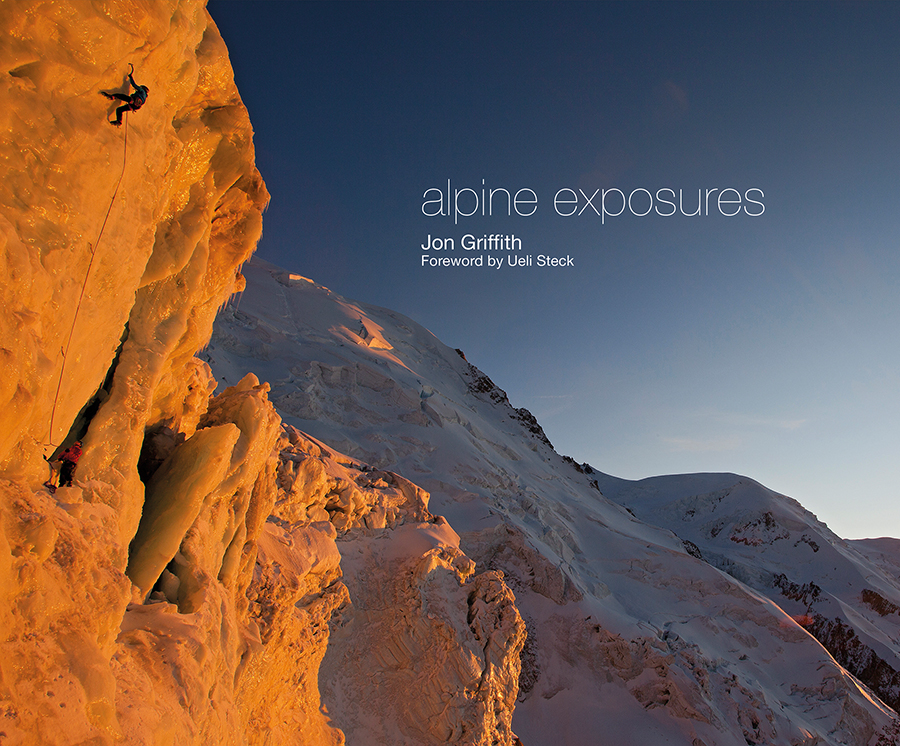
Alpine Exposures by Jon Griffith
You don’t even have a leash? What if you drop gear?
That’s the other thing: I’ve never broken or dropped a camera. I’ve never even broken a lens. If I took a huge fall that broke my camera, the last thing I’d give a crap about would be the camera.
If that’s not a main challenge in your work, what is?
It’s me. It’s where I can get the camera to.
You had a scary encounter with some Sherpas on Mount Everest not too long ago. [Griffith, Steck, and Italian climber Simone Moro fled Everest after a violent clash with a group of Sherpas in 2013.]
Everest was a huge conquest for Ueli as a climber, but also for me as a photographer. I’d literally be running after the guy–and I had [supplemental oxygen]. It was a massive entrainment, so it was really gutting for us to get threatened to death by the Sherpas. It was my first and only time I’ve been to Nepal.
Ueli says you’ve “morphed from a photographer to an alpinist.” Do you agree with that?
When I first met Ueli–he’s such a lovely guy–I’d already done a lot of climbing and quite a few north faces, but to him, unless you’re climbing every single day or at least training, you’re not a climber. He’s just pitching at such a high level.
Do you have any tips for aspiring photographers?
The very best thing you can do is to find yourself an athlete. I’m Ueli Steck’s photographer, and that’s better than showing anyone a portfolio.
Follow Sierra on Facebook, Twitter, Pinterest, Instagram, and YouTube.
 The Magazine of The Sierra Club
The Magazine of The Sierra Club
